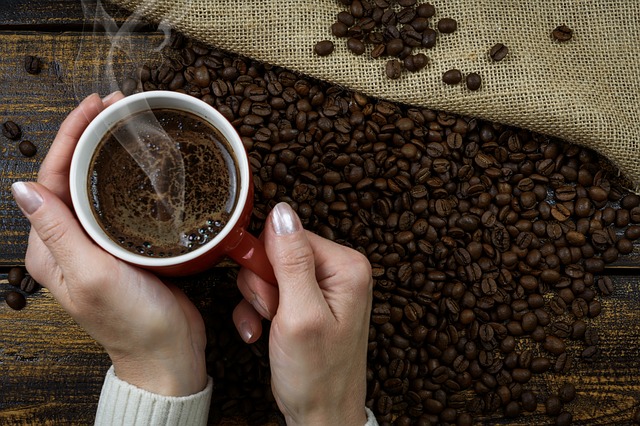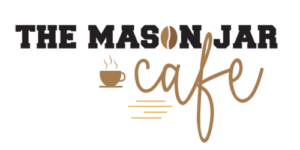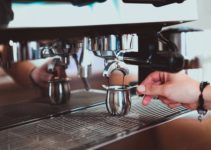
Percolator vs French Press: Which Is Better For You?
If you’re looking for a new way to brew coffee, it’s important to know the difference between French Press and Percolator. The two have different strengths and weaknesses, so understanding which one is appropriate will depend on your needs. In this blog post we’ll compare them head-to-head.
Table of Contents
Percolator
As the name suggests, a percolator is a device that helps coffee brew in a more flavorful and aromatic way. The water is first heated until it reaches boiling point. It is then poured over the coffee grounds that are placed in the percolator’s chamber. This causes the water to seep down through the coffee grounds and then up through again. This continuous cycling of hot water through the coffee grounds extracts more flavor and aroma from the beans, resulting in a richer cup of Joe.
If you’re looking for a better cup of coffee, or if you just want to try something new, I urge you to give percolating a try. It’s a simple process, and the results can be really delicious. Plus, it’s a great way to show off your mad barista skills!
Percolators have been around since the early 1800s, and they continue to be popular today. Unlike drip coffee makers, which use gravity to slowly trickle water through coffee grounds, percolators use pressure to repeatedly cycle hot water through the grounds. This extraction method results in a richer, more flavorful cup of coffee. If you’re looking for a better cup of coffee, or if you just want to try something new, I urge you to give percolating a try. It’s a simple process, and the results can be really delicious. Plus, it’s a great way to show off your mad barista skills! That’s all for now. Be sure to check back soon for more coffee-related content.
If you’re considering buying a percolator, there are a few things you should keep in mind. First, percolators come in a variety of sizes, so you need to choose one that’s appropriate for your needs. Second, not all percolators are created equal. Some are made from better materials and have more features than others. So, when shopping for a percolator, be sure to compare different models and read reviews before making a decision.
Finally, remember that percolating takes time. So, if you’re in a hurry, you may want to consider using a different brewing method. But if you have the time, and you’re looking for a richer, more flavorful cup of coffee, percolating is definitely the way to go.
The Pros And Cons Of Percolator
The Pros Of Percolator
There are many benefits to using a percolator. Some of these benefits include:
– The coffee tastes great
One of the main benefits of using a percolator is that the coffee tastes great. This is because the coffee is brewed slowly and evenly, which results in a rich, full-bodied flavor.
– It’s easy to use
Another benefit of using a percolator is that it’s easy to use. All you have to do is add water and coffee grounds to the pot, place it on the stove, and let it brew.
It’s affordable
Another benefit of using a percolator is that it’s affordable.
– It’s portable
Last but certainly not least, one of the benefits of using a percolator is that it’s portable. All you have to do is bring it with you when you go camping or on other adventures.
The Cons Of Percolator
– It takes time
One of the main downsides to using a percolator is that it takes longer than other types of coffee makers (such as drip coffee makers). This is because percolators brew their coffee by constantly cycling the boiling water through the grounds. Percolators also tend to be very slow at brewing multiple cups of coffee at once. If you’re in a rush and need coffee fast, this is probably not the best option for you.
– The used filters need to be cleaned
Another downside to percolators is that their used filters need to be cleaned. This means that there may be some chaff left in your coffee grounds after brewing, which causes your coffee to taste bitter.
– It’s difficult to clean
Another downside of using a percolator is that it can be difficult to clean. Some models have small parts that are difficult to remove and clean thoroughly because they are so close together (such as inside the filter basket). Other models come with removable filter baskets, which aren’t especially complicated but still require more effort than some other coffee makers.
– The bottom of the pot can get very hot
Another downside to using a percolator is that its bottom can become very hot while it’s brewing. If you have kids, they may be at risk of being burned by touching or bumping into this part of the percolator when it’s in use.
– It requires more parts than most coffee makers
Last but certainly not least, one of the downsides to using a percolator is that there are many different parts required to make it work properly. This includes things like gaskets, valves, and baskets. These additional pieces increase the chances that something might break down the road when it comes time to use your percolator, which can make it difficult for you to brew coffee.
How Does A Percolator Work?
A percolator is a type of coffee maker that uses pressure and gravity to brew a cup of coffee. The water is heated in the bottom chamber, and when it’s hot enough, the pressure forces it up through the grounds in the upper chamber. The coffee then drip-brews back down through the grounds and collects in the bottom chamber. The process is repeated until the desired strength is reached.
There are two main types of percolators: manual and electric. Manual percolators require you to stir the coffee every few minutes, while electric percolators do all the stirring for you. Both types have a filter basket at the top that holds the coffee grounds, and a pot or carafe at the bottom to hold the coffee.
The electric percolator was invented in the late 1930s by Irving Coffee Company employee David Strang , who claimed to have gotten the idea after watching his grandmother use a common household stand-type pepper grinder to “perk” her coffee. Today’s electric percolators are very similar to Mr. Strang’s original design, with minor changes made over the years for safety purposes.
Percolator vs French Press – Percolators are a great choice for people who like their coffee strong. The repeated brewing process extracts more flavor from the coffee grounds, resulting in a richer, more robust cup of coffee. Percolators are also a good choice for people who need to make a large batch of coffee. They can brew up to eight cups of coffee at a time.
French Press
The French press, also known as a coffee plunger, is a simple device used to brew coffee. The French press consists of a glass or stainless steel carafe with a metal plunger. Coffee is brewed by adding hot water to the grounds, which are then steeped for several minutes. The plunger is then depressed to trap the grounds at the bottom of the carafe. The coffee can then be poured from the carafe, leaving the grounds behind.
The French press is a popular brewing method because it produces a strong, flavorful cup of coffee. The coffee grounds are in contact with the water for a long period of time, allowing for maximum extraction of flavor. The French press also produces less sediment than other brewing methods, such as drip coffee makers.
The French press is a simple, affordable brewing method that produces a delicious cup of coffee. If you’re looking for a new way to brew your morning cup of Joe, consider giving the French press a try.
There are basically three steps to making great tasting coffee using a French Press:
#1. Use freshly ground beans which are coarsely ground, almost like breadcrumbs. One tablespoon per cup of water should do it. If you have an electric grinder just keep clicking until they look right. If you don’t have an electric grinder then get one, they’re cheap and work great! Otherwise- just do it by hand at the store.
#2. Put your grounds in the French Press, then pour boiling water into the coffee maker. Then stir it around with a spoon for 10 seconds to make sure all of the grounds are wet. This is also known as “wetting” or pre-infusing the coffee.
#3. Now put your plunger on top of the French press and let it sit there for between 4 to 5 minutes before plunging down slowly. Don’t plunge before four minutes is up because you’ll have some weak tasting sludge on your hands! And never push straight down, always angle 90 degrees off of vertical (see picture below).
The Pros And Cons Of French Press
The Pros Of French Press
If you’re looking for a great cup of coffee, the French press is a brewing method you should consider. Here are some of the pros of using a French press:
– You get a great cup of coffee. A French press produces a rich, full-bodied cup of coffee that’s fuller than what you would get from other brewing methods.
– The coffee stays hot longer. With a French press, the coffee stays hotter longer than with other brewing methods, which means you can enjoy your coffee without it getting cold too quickly.
– It’s easy to use. The French press is one of the simplest brewing methods around – all you need is ground coffee and hot water.
– It’s easy to clean up. After you brew your coffee with a French press, all you need to do is remove the plunger and filter, rinse out the glass carafe with water, and you’re done!
– The French press is better for the environment (and your wallet). A French press only requires about 6 ounces of water per cup of coffee brewed, whereas other brewing methods can require up to 8 ounces or more. This means that less water is necessary when using a French press than most other brewing methods – which saves time and money!
The Cons Of French Press
There are a few drawbacks to using a French press. The first is that the coffee grounds can end up in your cup if you’re not careful. This means you have to be really careful when pouring and make sure to use a spoon to stir the coffee before drinking.
Another downside is that it takes a bit longer to brew a pot of coffee with a French press than it does with other methods. This isn’t a huge deal, but it’s something to keep in mind if you’re in a hurry.
Finally, French presses can be a bit messy to clean. The best way to clean them is by hand, and some people find this process to be tedious. However, if you’re diligent about cleaning your French press after each use, you won’t have any issues.
How Does A French Press Work?
When caffeine is the only concern, a French press is an excellent choice. Its filter is made up of very fine mesh which allows for steeping as well as easy pouring. This method eliminates the need to use paper filters and this contributes to its outstanding taste. Even after 2 hours of brewing, there was no hint of bitterness or acidity inside our cups — just pure coffee goodness. The best thing about French pressed coffee – you don’t have to be concerned with wasting coffee grounds! Just use them for composting and start fresh with next batch, and continue doing so until your oil runs out (or if you’re really into recycling).
The French press requires that you heat water to around 200°F before using it. This is very important. If you have an electric kettle, that is great or you can use a tea pot for this purpose. Fill the pot with water and heat until just before boiling.
If you don’t have any one of these, then boil your water in a small pan on the stove till it reaches 200 degrees Fahrenheit or 93 Celsius. Once it reaches this temperature , take it off the stove immediately, so its right at 200°F when it goes into your French press. Take care to fill your French press all the way up to the top so there are no air pockets inside which will diminish your coffee’s taste. Add some freshly ground coffee by measuring out 1 tablespoon for every 4 ounces of water (or cup size). For example, if your French press holds 32 ounces, you would add 8 tablespoons of coffee.
Coffee should be ground to medium consistency for this method, to avoid getting any grit in the bottom of your cup. After that, you are ready for the next step….
Add hot water into the empty French press almost up to the top (leave about 1/2 inch gap). Stir to make sure it’s all saturated and wet. Let steep for 1-2 minutes, then without stirring insert plunger straight down so its half way through the grounds. If water level is too low because your let steep too long, just add more hot water till it reaches right after the halfway point — where you want to stop when plunging. Now let the coffee steep for 4 minutes, then gently push the plunger down the rest of the way. The mesh filter will hold back any large bits of coffee, giving you a clean cup in the end. Pour and enjoy!
The French press method is also great if you are making iced coffee because it has no paper filters to remove when pouring over ice cubes. Just make sure to use cold water in your brewing process, rather than hot. This will result in a smoother flavor than what you get with hot water brewing. Enjoy!
Coffee Percolator Vs French Press: Comparison
When it comes to coffee, there are many different ways to brew it. Two of the most popular methods are the coffee percolator and the French press. Both have their own unique benefits and drawbacks. So, which one is better? Let’s take a look at the pros and cons of each.
– Ease of Use (Percolator vs French Press): The coffee percolator is definitely easier to use than the French press. All you have to do is fill it with water and coffee grounds, put on the lid, and wait for it to brew. With the French press, you have to coarsely grind the beans, add water, stir, then put the lid on and wait. There is more work involved with the French press.
– Versatility: The coffee percolator can be used to make coffee, tea, and even hot chocolate. The French press can only be used to make coffee.
– Portability (Percolator vs French Press): The coffee percolator is smaller and lighter than the French press, making it more portable.
– Brew Time: The coffee percolator takes longer to brew than the French press.
– Taste (Percolator vs French Press): The coffee percolator produces a stronger cup of coffee than the French press. The French press produces a smoother cup of coffee.
– The Verdict: Overall, the coffee percolator is easier to use, more versatile, and more portable than the French press. However, the French press produces a smoother cup of coffee with a stronger taste. Therefore, if you’re looking for a strong cup of coffee with a smooth taste, the French press is better. But if you want an easier brewing experience and don’t mind having a different flavor, the coffee percolator is the way to go.
FAQs About Coffee Percolator Vs French Press
Do you need special coffee for a percolator?
No, you do not need special coffee for a percolator. In fact, most coffees are compatible with a percolator. However, some people believe that using a darker roast coffee in a percolator produces a richer cup of coffee. If you have never used a percolator before, it is important to follow the manufacturer’s instructions for how to use it. Each percolator is different, and you do not want to risk ruining your coffee by using it improperly.
Percolator vs French Press – If you are looking for a new way to make coffee, or if you just want to try something different, then consider using a percolator. You may be surprised at how delicious your coffee can be when made this way. Plus, it is a fun way to make coffee that everyone in your family will enjoy. Give it a try today!
Does a Percolator need a filter?
No, a percolator does not need a filter. A percolator works by passing hot water through coffee grounds and then recirculating the water back up through the grounds. This process extracts more flavor from the coffee than simply brewing coffee with hot water. The water will usually cool down enough as it passes through the grounds that there is no need for a filter to keep the coffee from becoming overextracted or bitter. Some people do like to use a paper filter in their percolator to create a cleaner cup of coffee, but it is not required. If you do choose to use a paper filter, make sure that it is a non-bleached filter made from organic materials. bleached filters can contain harmful chemicals that can leach into your coffee.
There are a few things to keep in mind when using a percolator. First, make sure that you use fresh, quality coffee grounds. Percolators can extract more flavor from the beans than other brewing methods, so using stale or low-quality beans will result in a poor cup of coffee. Second, do not let the water get too hot or it will become overextracted and bitter. Make sure to monitor the pot as it brews and adjust the heat as necessary. Finally, be careful not to let the pot boil over. This can create a mess and make cleanup difficult.
If you are looking for a simple, no-fuss way to brew a delicious cup of coffee, a percolator is a great option. Most models are very inexpensive and easy to find at discount stores or online.
How do you grind coffee in a percolator?
Percolators are a popular way to brew coffee, and there are several ways to grind the coffee beans for use in a percolator. The most common way is to use a coarser grind, which will allow more of the flavor compounds to be extracted during the brewing process.
If you have a manual percolator, you can grind the coffee beans using a mortar and pestle. Another option is to use a burr grinder, which will give you a more consistent grind size. If you’re using an electric percolator, you can grind the coffee beans in a food processor or blender.
Whatever grinding method you choose, make sure that the grind size is consistent so that the water flows through the ground coffee at an even rate. If your percolator has a brewing basket, you’ll want to use the same grind size for both the top and bottom layers of coffee in order to ensure that they will be properly mixed during the percolating process.
If you’re using pre-ground coffee beans, make sure they are coarsely ground according to package instructions. Different brands of percolators may require different grinds, so check with your manual or manufacturer if you are unsure about what size grind is necessary for your particular model. Always start by grinding less beans than suggested on the packaging, then add more as needed until you achieve your desired flavor.
Keep in mind that it typically takes more freshly ground beans to produce a flavorful cup of coffee in a percolator than it does to make a pot using an automatic drip brewer. So, if you’re looking for the richest, most robust flavor, be prepared to grind those beans fresh!
Percolator vs French Press – Now that you know how to grind coffee for a percolator, let’s take a look at some of the best ways to use this brewing method for the perfect cup of joe.
Why is it called a French Press?
The French press is called such because it was invented in France. It’s a simple device that has been used for centuries to brew coffee and tea. The coffee or tea is steeped in hot water, then strained using the French press. The resulting beverage is rich and flavorful.
The French press is also known as a coffee plunger. It has a cylindrical glass carafe with a metal plunger that fits inside. When the plunger is pushed down, it forces the coffee or tea to the bottom of the carafe. This separates the solids from the liquids, which results in a smooth drink.
The French press is easy to use and clean. It’s also portable, making it a great choice for camping or travel. If you’re looking for a simple, yet delicious way to brew coffee or tea, the French press is the perfect choice. Give it a try today!
How many times can you use a French Press?
When you read about French Press Brewing methods, one of the first things they’ll tell you is to be careful using a French Press more than once.
The main reason for this is that it’s difficult to remove all coffee particles from inside a press, and if those particles sit too long, they can create an acidic taste in your next cup. It won’t happen every time, but the idea behind not reusing a press means you should grind less coffee as well as use less water to keep those little bits from making their way into your cup.
So How Long Can I Brew In A French Press?
Percolator vs French Press – A typical French Press container holds between four and eight cups of liquid – so technically speaking – you can brew four – eight cups before it’s time to retire the device and buy a new one.
But should it be four – eight cups?
Brewing coffee is not like baking a cake where you can pull your concoction out of the oven after a certain amount of time and it will taste pretty much like what you intended. When brewing coffee, every step counts: from temperature all the way down to how long before you press your plunger down; each second affects your final product. So while you could get away with reusing your French Press four or five times, if you want to retain that flavor that wowed that first cup into getting out of bed in the morning, we recommend limiting its usage at two times only.
What type of coffee is used in a French press?
There are many different types of coffee that can be used in a French press, but the most common is dark roast. This type of coffee has a rich flavor that pairs well with the metal plunger and filters of a French press. Other types of coffee that can be used include light roast, medium roast, and decaf. Be sure to experiment with different blends and roasts to find the perfect flavor for your palate.
Can I use fine grind in French press?
Fine ground coffee will probably be too fine for a French press (fell free to correct me) and is best suited for an espresso machine. The only reason the finest ground will work is because of how it’s brewed, where as with a French press you’re basically steeping the grounds in hot water. So your goal should be getting as coarse as possible without it feeling grainy (this varies from brewer to brewer though)
As with any brewing device, experiment and see what works! Although I’d say try creating coffee that tastes delicious first before worrying about how different brews react to certain grind levels. For reference, I typically use 1:16-1:18 since 1:17 tends to become grit pretty quickly under my brewers’ pressure.
How Much Coffee to Use in a French Press?
A question that is asked frequently by those who are venturing into the wonderful world of French press coffees for the first time is “how much coffee should I use?” The answer to this question will vary depending on how strong you like your brew. The standard ratio for using one 3-4oz cup of water with one tablespoon of ground coffee, yielding two 8 ounce cups of brewed coffee. This will result in an average strength cup of coffee which can be increased or decreased next time. If you want stronger, increase the amount of ground coffee accordingly, if you wish to decrease it, lessen the amount accordingly. Remember that once pressed, whatever results from your servings size will remain consistent – if you want to enjoy a stronger cup, serve it then!
How much coffee should I use for how many cups?
This is another question that can only be accurately answered by taking the number of cups you wish to make and dividing your desired amount of coffee by two – this will give you an accurate result for the level of strength you wish to achieve. For example, if you want 8 ounces and you divide your desired amount (6oz) by two ,you will end up with 3 oz as your answer which is equal to 1 1/2 tablespoons. The other option is to weigh the coffee using a scale – not all French presses come with one, but they are inexpensive and can be found at any grocery store. This is the most accurate way to make sure you are using the right amount of coffee.
To recap, when it comes to how much coffee to put in a French press:
– For every 3-4oz of water, use 1 tablespoon of ground coffee
– If you want a stronger cup, increase the amount of ground coffee accordingly
– For every cup you want to make, divide desired amount by two for an accurate level of strength. Weighing your coffee is the most accurate way to do this.
How Do You Know When The Percolator Is Done?
Percolator vs French Press – There is no one definitive answer to this question. Each percolator is different, and will have its own unique way of indicating that it has finished brewing coffee. However, there are a few general tips that can help you determine when your percolator is done.
One common sign that a percolator has finished brewing is when the coffee begins to overflow from the pot. If the coffee starts to flow out of the pot and down the sides, it’s likely that the percolator has reached its maximum brew capacity.
Another indication that the percolator is done brewing is when the coffee becomes very thick and syrupy. If the coffee appears to be concentrated and has a sticky consistency, it’s likely that all the water has been absorbed and that your percolator is done.
Also, if your percolator has an electric cord with a light on it, the light should turn off once the pot is done. If you don’t have one of these types of percolators, manually lift or press down on the plunger to determine when to stop brewing. Alternatively, you can leave the pot attached to its stand until you see steam rising from where the pot meets the filter basket; this indicates that all the water has been used up and that it’s time to remove the pot from heat.
Finally, there are some old-fashioned tricks for determining whether or not your coffee is done: smell it! When coffee first begins to percolate, it releases a strong, bitter aroma. If you can smell anything other than coffee during the brewing process, your percolator isn’t done yet. Once the perking has settled down and most of the water has been used, you’ll start to smell rich, earthy scents rising from the pot. Once this happens, remove the pot quickly so that it doesn’t burn or overcook!
Once you’ve determined that your percolator is done, its best to remove it from the heat source. If you leave the pot on for too long, the coffee will continue to cook and become bitter or burnt tasting. No matter which method you use to determine when your percolator is done brewing, just remember that there’s no universal answer; every coffee maker is different!
>>> See more: The Ultimate French Press Technique | Percolator vs French Press
Conclusion
Brewing coffee is an art form, and there are many ways to create the perfect cup. If you’re looking for a flavorful, aromatic java with a rich texture, the percolator might be the right choice for you. This brewing method uses pressure and heat to produce a bold cup of joe. However, if you’re looking for something with a little more finesse, the French press just might be your best bet. This unique brewer gently steeps coffee grounds in hot water, resulting in a smooth final product. So which is better: the Percolator vs French press? The answer depends on your own personal taste!
Ultimately, which brewing method you choose comes down to personal preference. If you want a quick and easy cup of coffee without sacrificing too much flavor, go for a percolator. But if you’re looking for something with a bit more depth and richness and don’t mind the wait, then a French press might be more up your alley.
You may like this: Jura Z6 Vs Z8: It’s Time to Understand the Difference



